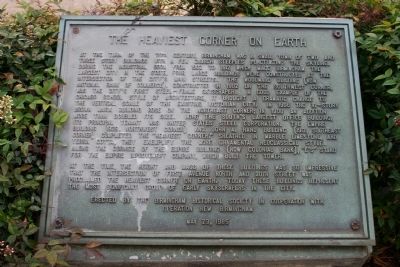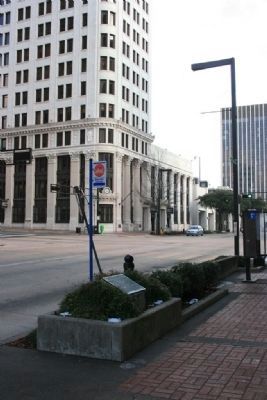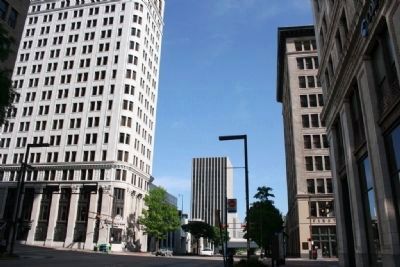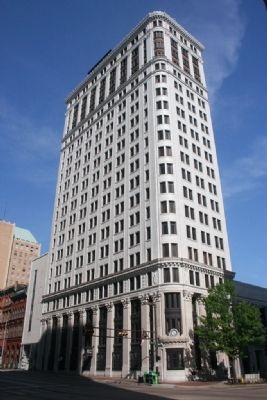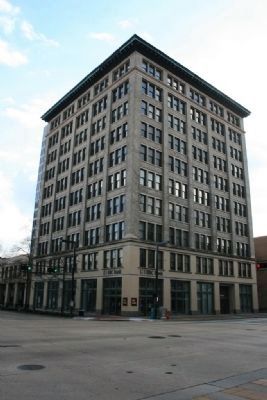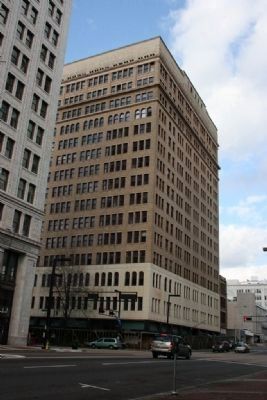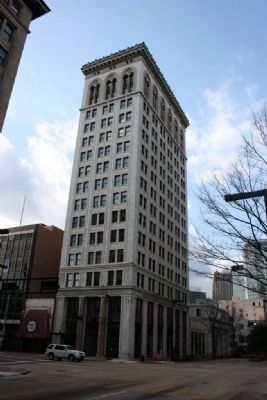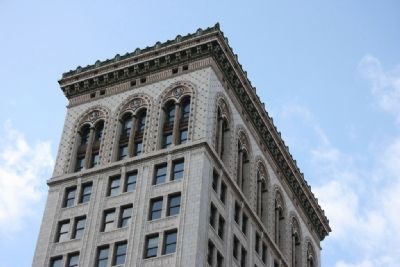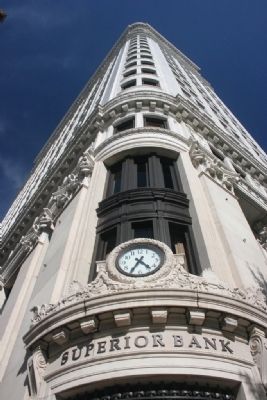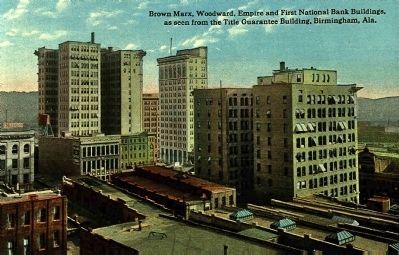Birmingham in Jefferson County, Alabama — The American South (East South Central)
The Heaviest Corner On Earth
At the turn of the 20th century, Birmingham was a small town of two and three story buildings with a few church steeples punctuating the skyline. During the industrial boom from 1902 to 1912 which made Birmingham the largest city in the state. Four large buildings were constructed at the intersection of the City's main streets. The Woodward building (now National Bank of Commerce), constructed in 1902 on the Southwest corner, was the City's first steel-frame skyscraper. A good example of the Chicago school style of architecture, it brought a dramatic change to the vertical scale of the existing Victorian City. In 1906 the 16-story Brown Marx building rose on the Northeast corner; in 1908 an addition more than doubled its size. Long the South's largest office building, its principal tenant was United States Steel Corporation. The Empire building (1909, Northwest corner) and John A. Hand building (1912, Southeast corner), completed the "Heaviest Corner." Sheathed in marble, limestone, and terra cotta, they exemplify the more ornamental neoclassical style. Along the cornice of the Empire building (now Colonial Bank), "E's" stand for the Empire Improvement Company, which built the tower.
At the time, the height and mass of these buildings was so impressive that the intersection of First Avenue North and 20th Street was proclaimed the heaviest corner on Earth. Today these buildings represent the most significant group of early skyscrapers in the city.
Erected 1985 by Birmingham Historical Society / Operation New Birmingham.
Topics. This historical marker is listed in these topic lists: Architecture • Industry & Commerce. A significant historical year for this entry is 1902.
Location. 33° 30.87′ N, 86° 48.354′ W. Marker is in Birmingham, Alabama, in Jefferson County. Marker can be reached from the intersection of 20th Street North and 1st Avenue North (U.S. 11), on the right when traveling south. Touch for map. Marker is in this post office area: Birmingham AL 35203, United States of America. Touch for directions.
Other nearby markers. At least 8 other markers are within walking distance of this marker. Morris Avenue Historic District / Elyton Land Company (Successor, Birmingham Realty Co.) (about 300 feet away, measured in a direct line); The Berry Project (about 400 feet away); Dewberry Drugs and Phenix Insurance Company Buildings (about 600 feet away); Celebrity Star Power (about 600 feet away); Steiner Bank Building (about 600 feet away); Newberry's Department Store/IMAX Dome Theater (about 600 feet away); Integration Corner (about 700 feet away); Let My Brother Go (about 700 feet away). Touch for a list and map of all markers in Birmingham.
Also see . . . Heaviest Corner on Earth
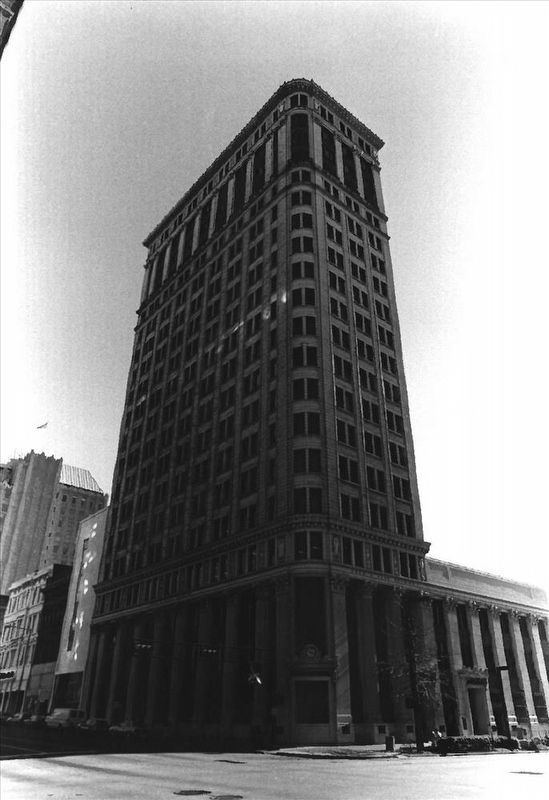
via NPS, unknown
2. The Heaviest Corner On Earth
National Register of Historic Places Nomination Form
at NPGallery Digital Asset Management System
Click for more information.
at NPGallery Digital Asset Management System
Click for more information.
Additional keywords. "National Register of Historic Places"
Credits. This page was last revised on October 22, 2023. It was originally submitted on February 14, 2010, by Timothy Carr of Birmingham, Alabama. This page has been viewed 2,143 times since then and 62 times this year. Photos: 1. submitted on February 14, 2010, by Timothy Carr of Birmingham, Alabama. 2. submitted on October 22, 2023, by Larry Gertner of New York, New York. 3, 4, 5, 6, 7, 8, 9, 10, 11. submitted on February 14, 2010, by Timothy Carr of Birmingham, Alabama. 12. submitted on October 6, 2013. • Bill Pfingsten was the editor who published this page.
